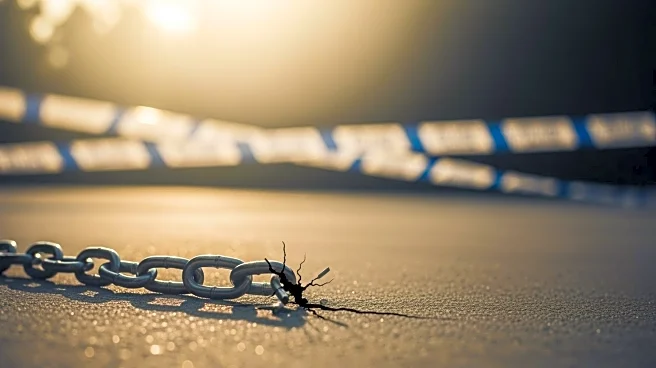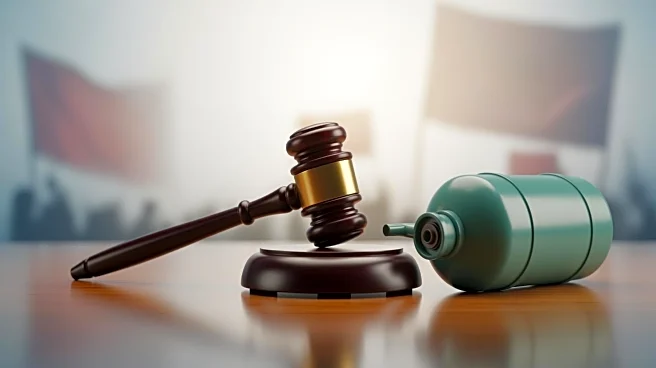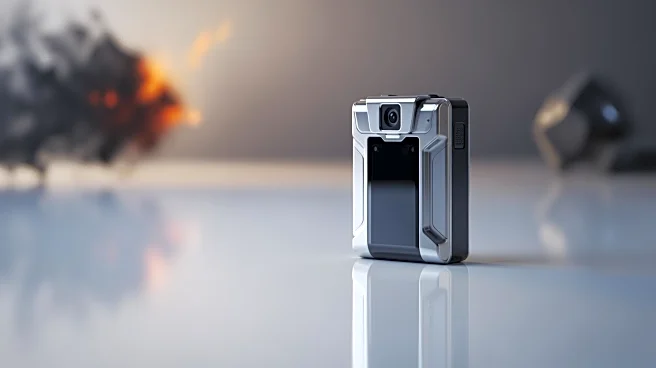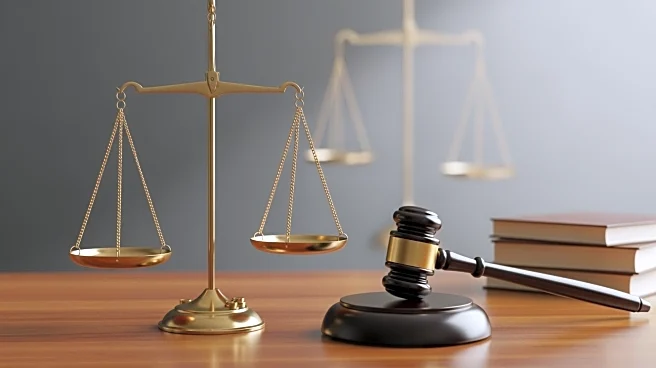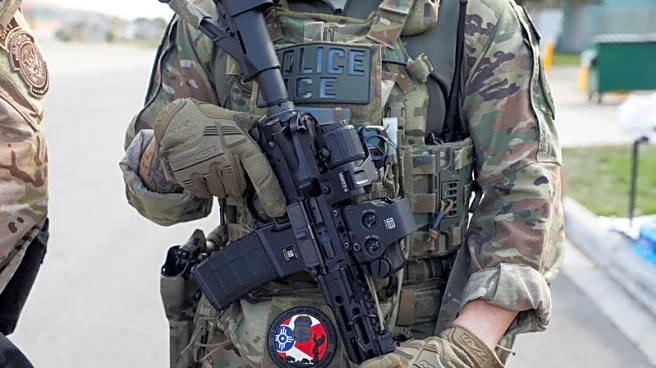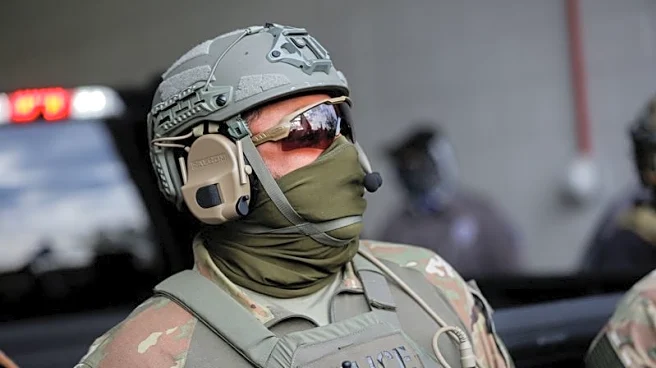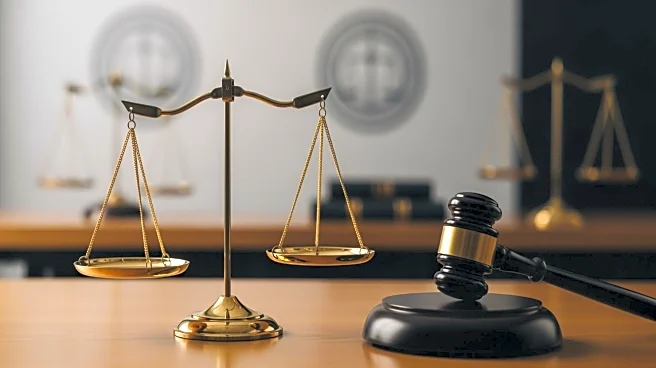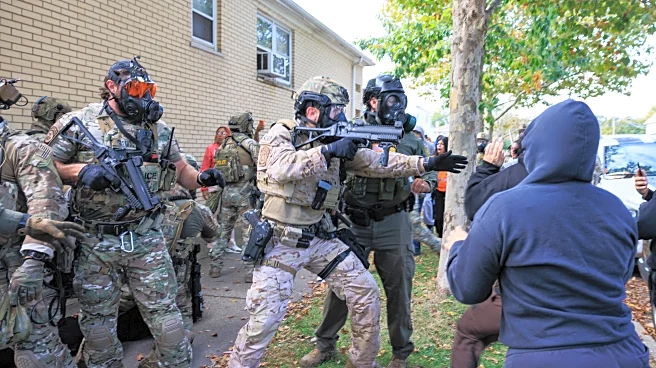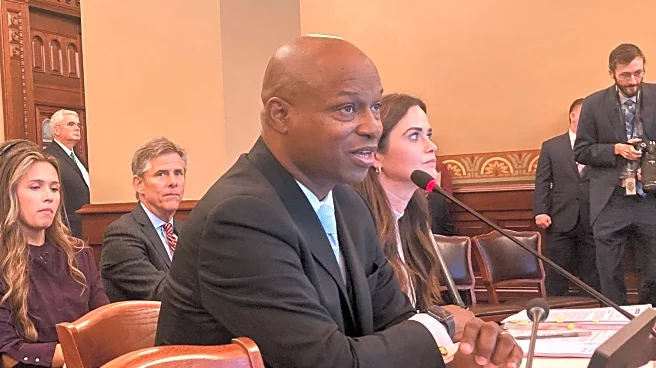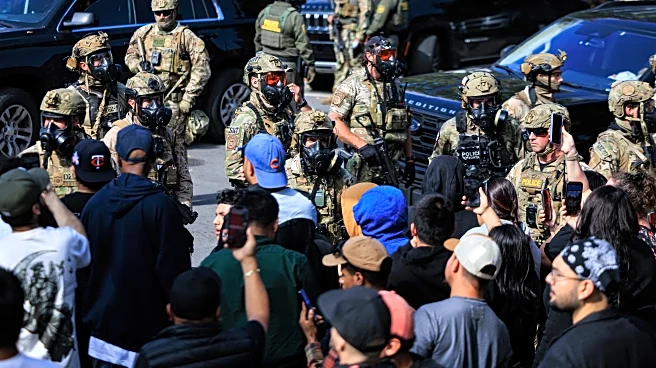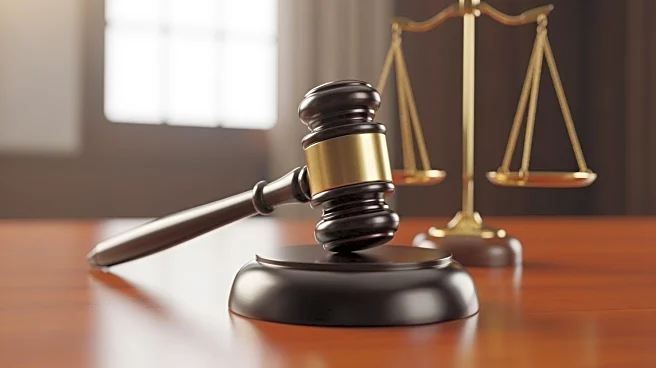What's Happening?
A federal judge in Chicago has expressed significant concern over the actions of Immigration and Customs Enforcement (ICE) agents, who are accused of using tear gas against protesters and journalists.
U.S. District Judge Sarah Ellis has ordered ICE Field Director Russell Hott to appear in court to address these allegations. The judge modified a temporary restraining order to mandate that agents activate body-worn cameras during public encounters. This decision follows reports of federal agents allegedly violating constitutional rights during recent immigration-related protests in Chicago. The restraining order prohibits agents from using tear gas and other projectiles against peaceful protesters, clergy, or journalists unless there is an immediate threat of physical harm. The Department of Justice has objected to the restraining order, arguing it is impractical and problematic.
Why It's Important?
The judge's actions underscore the tension between federal immigration enforcement and constitutional rights, particularly the First Amendment rights to protest and free speech. The case highlights the ongoing debate over the use of force by federal agents during public demonstrations. The restraining order aims to protect journalists and protesters from excessive force, emphasizing the importance of upholding democratic principles. The Department of Justice's objection suggests potential challenges in balancing law enforcement duties with civil liberties. This situation could influence future policies regarding federal agents' conduct during protests, impacting public trust and the relationship between law enforcement and communities.
What's Next?
The court appearance of ICE Field Director Russell Hott is expected to provide further clarity on how ICE plans to comply with the judge's orders. The upcoming hearing may address whether federal agents have violated the restraining order and could lead to additional legal actions or policy changes. The plaintiffs have requested expedited discovery ahead of a hearing on a full injunction, indicating ongoing legal proceedings. The outcome of these hearings could set precedents for how federal agencies handle protests and media coverage, potentially affecting future enforcement strategies and civil rights protections.
Beyond the Headlines
The case raises broader questions about the ethical and legal responsibilities of federal agents during public demonstrations. It highlights the need for transparency and accountability in law enforcement practices, particularly concerning the use of force. The requirement for body-worn cameras reflects a growing demand for oversight and documentation of police actions. This development may influence public discourse on civil liberties and the role of federal agencies in maintaining order while respecting constitutional rights.
